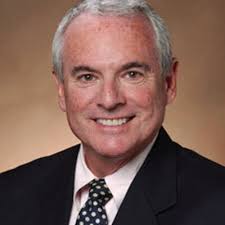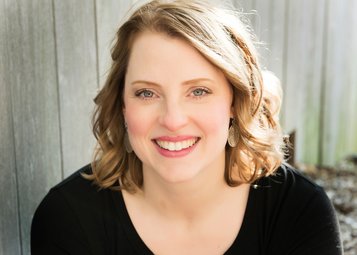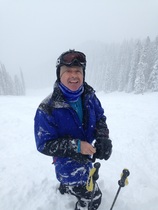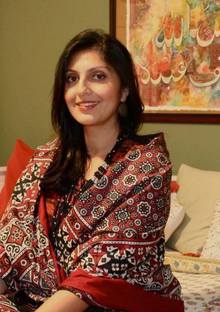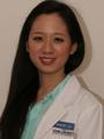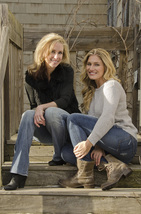|
Arlen Meyers MD, MBA is an academic surgeon who practiced as an Ear, Nose and Throat surgeon at the University of Colorado School of Medicine before creating a new career path as a leader filling a void in world of bio-entrepreneurship.
Dr. Meyers’ combination of academics and entrepreneurship a natural fit, given that he grew up in Philadelphia around academics and business, as his father was a professor who also owned a pharmacy. After he completed medical school and ENT residency, Dr. Meyers was recruited to work at The University of Colorado, where he has remained for his whole career.
Interestingly, it was his academic research that led to his acquiring a deep understanding of entrepreneurship, and ultimately to his current status at the forefront of entrepreneurship education. Dr. Meyers had a research interest in biophotomics, which involves the science behind the intersection of light and human tissue. As a surgeon who has a practice involving head and neck tumors, he was specifically interested in the use of biophotonics as a solution to head and neck disease. He went to business school and it was there that he collaborated with colleagues to create a gadget designed to detect tumors. This process taught him a great deal about business and entrepreneurship. His medical experience, business school, his own product development hits and misses, along with years of experience after his initial entry into the business world, have all combined to give him a formal and informal expertise in the world of bio entrepreneurship.
Arlen Meyers says that almost every doctor has a great idea - but he explains that ideas are extremely difficult to commercialize. And this is where he works to fill the gap. He has developed an entrepreneurship program at The University of Colorado that has been growing for the past six years. He also works as a consultant in the medical product development industry, guiding and advising companies and individuals as they take concepts in healthcare innovation from idea to commercially available products. And he even started a non-profit organization, SOPE (The Society of Physician Entrepreneurs,) the largest organization of its kind in the world.
He has advice for aspiring entrepreneurs based on years of experience in helping doctors get their businesses started. Overall, he says that being an entrepreneur means creating your own job. But, he explains that it is unrealistic to expect to earn a high salary immediately. He explains that when a physician moves into a new field, there has to be a transition period. When doctors leave clinical practice, the new role requires a different skill set and it takes time to demonstrate value in the new workplace- which is an opportunity cost. He estimates that the transition from practicing physician to entrepreneur takes about 3-5 years and requires introspection, commitment and acceptance of delayed gratification.
And, while he got his MBA years before the MD/MBA became a ‘thing,’ he does not believe that an MBA is necessary for physicians who are making a transition. Dr. Meyers explains that MBA programs for physicians are built for administration and policy, not for entrepreneurship. He does say that the benefits of an MBA include connectedness, credibility, credentials and content- in that order. And in his own experience, collaboration was indeed valuable. He advises to take a close look at the cost/benefit before jumping into an MBA program. Dr. Meyers himself has noticed a gap in medical education and he has worked hard to fill that gap in his dedication to provide physicians with the tools they need to become successful entrepreneurs. Dr. Arlen Meyers can be contacted through SOPE or by email at arlen.meyers@ucdenver.edu
1 Comment
Katrina Ubell is a doctor turned independent businesswoman who has taken on new challenges in her professional life. But, despite her impressive resume, Dr. Ubell is also a very ‘real’ and down to earth person whose success lies in her ability to connect with people on a personal level.
As early as her college years, it is apparent that Katrina didn’t shy away from challenges. As an undergraduate engineering major already taking an intense course load, she had an experience working in orthopedics research and decided to become a doctor. After taking the required pre-med courses, she was accepted to medical school with the plan of becoming an orthopedic surgeon. But during her clinical rotations, pediatrics was the specialty that felt most right to her.
She worked as a pediatrician for ten years, enjoying the interaction with children and parents. And while she loved her work as a physician, after ten years she started to feel that she wanted to achieve something different professionally.
During a relatively stressful time of home renovation, she casually decided to use the professional services of a friend who was training as a life coach. Dr. Ubell says that the coaching was transformative. She decided to train as a life coach so that she could integrate the skills into her pediatrics practice. She looked into training as a life coach, but, as a busy mom and physician, she didn’t have the time. And then systematic issues at work became more bothersome. She thought about finding another practice set up. And then she decided that she would continue working as a pediatrician for ten years and then become a life coach. Within a fairly short amount of time, she decided not to wait ten years to become a life coach, and to do it sooner. She gave her job a generous 6 months notice, and then she left to start on the next chapter in her professional life.
Dr. Ubell began her life coach training. Coursework included life coaching skills as well as business coaching, and she says that the tuition was definitely cost effective. She still remains in touch with her graduating class, and they bounce ideas off each other in an online forum.
As a life coach, Dr. Ubell is an independent businesswoman. She describes her coaching as algorithmic and logical- although she explains that not all life coaches approach it that way. Her work is challenging in a number of ways. She explains that she went from the highly regulated field of medicine to a significantly less regulated field. Women physicians are her niche client group, but she has other clients as well. She runs her own business and takes care of online marketing and PR. Her business set up includes an introductory call with potential clients, followed by a sales call describing services and payment, and then a coaching schedule. Overall, she knows the value that she provides to her clients and she has been gratified because her clients recognize her value as a coach, which has led to a growth of her business through word of mouth. Dr. Ubell discusses her personal experience with coaching here. You can contact Dr. Katrina Ubell on her website katrinaubellmd.com
Mark Binstock MD is the Associate Medical Information Officer for Mercy Health Systems. Dr. Binstock is a doctor with so many degrees and certifications that his work in the challenging area of Medical Informatics- an area that bridges clinical medicine with population health and payer-focused documentation- seems a natural fit. Even before specializing in OB/GYN, Dr. Binstock received a master’s degree in Public Health while obtaining his MD degree. Two years ago, he also became board certified in Medical Informatics, a specialty that entails its own course work, training and certification, including requirements for MOC.
A board-certified OB/GYN who was a department chair with a busy clinical schedule, Mark Binstock started to take on more responsibility in the emerging area of Medical Informatics. Initially working on the EPIC platform, he wanted to look at electronic medical records in a more academic way and to be able to incorporate his interest in population health. He completed a fellowship and took online courses for over 3 years, taking only 1 course per quarter because he was still running a department and taking care of patients as an OB/GYN. As he found his level of responsibility in the area of electronic medical records increasing, he decided that the pace of dividing his time and energy between clinical practice and Medical Informatics was not the right long term plan.
Now he has a full time position as the Associate Medical Information Officer with Mercy Health. He is certified as a builder in EPIC, but explains that a clinician’s time is better utilized in areas outside of coding. He specifically works with functionality, decision-making and population health as well as teaching clinical practices to optimize newly implemented EMR.
Medical Informatics is a subspecialty that requires course work and certification, as well as a prerequisite board certification in a specialty recognized by the American Board of Medical Specialties. Dr. Binstock views EMR as enabling organizations to close gaps in deficiencies in public health. He describes the data that is made available through EMR as a ‘bonanza.’ But, he definitely recognizes that clinicians have been largely ignored in the EMR experience- and not just because he was a busy clinician himself. His wife is a practicing internist, and therefore, she is the end user of everything he does. Dr. Binstock says that his wife has an ability to spot flaws in the system and is the ultimate user acceptance tester. He understands that the system was built to for payers, for the government, for meaningful use, for ICD-10, and for payment reform as well as to serve the many other hands in the pie of healthcare. He points out that the clinician is notably missing on that list of valued clients of EMR, and now there is a backlash. When asked his opinion about whether flaws in the EMR doctor experience will improve, he doesn’t pretend that it is easy or that it will happen overnight. He predicts that change in the area of Medical Informatics is most likely in the areas of bundled payments and commercial exchanges that will alter the premise of the billing side. He describes fixing flaws in the system as a huge undertaking largely due to the complexities of coding and the variation in medical specialties and he does not anticipate an ‘wow’ to the user experience. Perhaps because he is a physician himself and because he is married to a practicing physician, he is especially discerning and insightful about the nuances of the demands of EMR and how complex it is to resolve the varied demands.
Often traveling throughout Ohio and Kentucky for his work, Dr. Binstock believes that Medical Informatics has the potential to alter the future of population health through the data obtained. He explains that the effects of EMR could be significant in terms of the early detection of disease trends and overall disease prevention, an outcome that ultimately helps large groups of people.
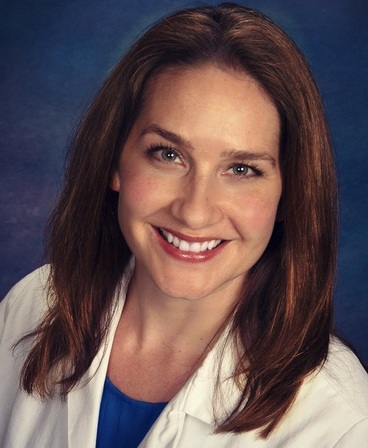
Marjorie Stiegler MD is a physician who has managed to become successful with some unexpected and diverse projects. When she notices that a need is unfilled, she often jumps in to fill that unique gap in the market. An anesthesiologist herself, she and her husband started a thriving maternity active wear company with very little experience in fashion and almost no initial investment. Her social media experience gained through marketing her active wear line has helped her become an expert in social media, and she has taken that know-how to teach physicians how to use social media. Dr. Stiegler is regularly invited to speak and give workshops, and, always looking to explore the latest trends in social media, she has launched a course on the new platform Facebook Live.
Dr. Stieger’s initial leap into active wear began when she was pregnant with her first child in 2009. She explains that had been a fitness instructor prior to medical school. Unable to find maternity active wear, and encouraged by her husband who was getting an MBA at the time, they decided to create their own products. Since they lived in Los Angeles, which had a fashion-manufacturing infrastructure, they drove 20 minutes to the fabric district, and began selecting materials and designs. She herself wore the first prototypes and was inundated with people who wanted to know where they could buy the styles.
The couple created a website to feature their products and launched a purely ecommerce maternity active wear business, fortwofitness.com. And this is how Dr. Stiegler learned about social media. It turned out that whenever a mommy blogger or a fitness blogger commented about the items, traffic and sales went up. At a time when there were few bloggers, she began reaching out to brand influencers and offered them the products as a marketing strategy. Now, when there are thousands of bloggers, fortwofitness.com receives requests from bloggers, rather than searching for the brand influences. Dr. Stiegler’s company can select bloggers based on whether their sites are the right fit for the target audience. Fortwofitness.com has customers in over 300 countries and the products are available on Amazon.com, Zulily.com and other sites. In the meantime, she and her husband are still able to maintain their full time jobs and they hire professionals to help with the marketing process. She credits the initial impetus that led them to create the company with the fact that they were surrounded by an entrepreneurial attitude that was prevalent in her husband’s MBA program and that they were so close to LA’s manufacturing center.
And all of the social media experience led to yet another venture for Marjorie Stiegler. Active on social media since 2010, she gained early experience before most physicians adopted it. She began to notice that doctors were not using social media to their advantage, along with the fact that there are inherent risks involved with physician use of social media. Because of her experience with several social media platforms, she was invited to speak and present at conferences. Never satisfied with the status quo, she recently decided to explore the newest platform on Facebook, which is Facebook Live. She created a physician social media course composed of 30 mini modules that are easily accessible onlinehere. She is presenting an intensive social media course to a physician audience next month. And, if that wasn’t enough, Dr. Stiegler also co-edited a textbook, Quality and Safety in Anesthesia and Perioperative Care.
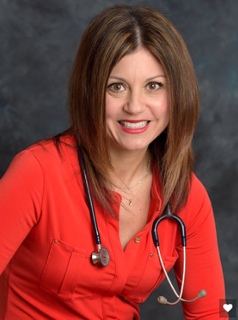
Christina Johns MD has built a career that many doctors only dream of- as a spokesperson and Senior Medical Advisor for a major health care organization, PM Pediatrics. Dr. Johns path to a career in healthcare media started while she was still in her pediatrics training, but media work did not initially take her away from her pursuit of becoming a good clinician.
While she was on duty as a resident at Johns Hopkins, she was interviewed on the spot for a story. After watching her, the news director for the local ABC affiliate was impressed with her professionalism and her comfort level in speaking to the media. He suggested that she move towards media work as a job. From there she started by appearing in local health and medical pieces. As she moved on to a pediatric emergency medicine fellowship, she continued to do interviews. The hospital media team got to know her, and when a member of the hospital media team heard that ABC was looking for a medical correspondent, the hospital championed her by helping her make a demo reel of her interviews. From there she was hired by ABC news and she chose to stay on in pediatrics emergency medicine as a full time faculty. She divided her time between clinical work and live news reports for a number if years, eventually becoming assistant division chief of pediatric emergency medicine. Soon enough, she was called by CNN for interviews and commentary about medical topics.
She decided to remain in academic medicine until a company called PM Pediatrics, which had heard about her through her work in media, called her and asked her to be their spokesperson and medical advisor. She accepted the offer and is now the Senior Medical Advisor for PM Pediatrics. She is part of the executive leadership for the company in charge of medical content and strategy and her role is a full time non-clinical role. By choice, Dr. Johns still sees patients about once or twice per month in urgent care and still keeps a PRN clinical appointment at Children's National Medical center, the regional academic trauma center, because she does love seeing patients and because she wants to maintain her clinical skills.
Christina Johns describes her job as a busy and challenging one. She says that she stays on top of the most updated medical research and developments, because an inherent component of media involves staying ahead of the news and reporting everything in timely manner.
Dr. Johns is generous in sharing her advice with other physicians who have an interest in working in the media. She says that it is important to reach out to your own hospital PR and marketing department by showing your interest and letting the media team get to know you. She advises doctors to make pitches to the media team, keeping in mind that some stories are seasonal, some are breaking, and some are evergreen. She also suggests getting involved in your national medical society and getting to know the committee that manages communications for your medical specialty organization. She says that taking initiative by constructing a social media identity and tweeting or posting or sharing stories is a good way to build a following and to get experience in media.
Interestingly, Dr. Johns points out that typically, it is not trainees who are sought after for medial expertise and media interviews, but rather, more experienced physicians. She explains that clinical experience is an important part of building credibility and she also emphasizes that it is important to stay current on clinical procedures in order to avoid becoming outdated. You can follow Dr. Christina: Facebook: Dr. Christina Johns Twitter: DrCJohns Instagram: deardrchristina Snapchat: deardrchristina 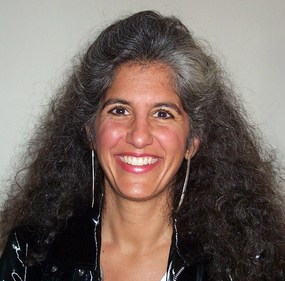
Rebecca Elia MD, CPCC was interested in wellness and self-care before it became trendy. Initially drawn to medical school because she saw it as a way to help people create healthy lives, she felt that medicine was designed around more of a disease-based model of care, than the holistic model she felt was her calling. Dr. Elia chose the specialty of obstetrics and gynecology because it gave her the opportunity to work in an environment with healthy women.
She combines her unique background, which consists of a psychology degree from UC Berkeley, her medical school education, her obstetrical specialty training and experience living in Greece with her additional qualification as a Certified Professional Co-Active Coach to guide her physician and executive clients and give talks and seminars in the US and abroad to help women along their path to wellness. Here Dr. Elia shares her insight about coaching highly motivated professional women who often find themselves working in a system that does not support them.
What made you think about pursuing work outside of traditional medicine?
I was always interested in helping women create healthier lives. Nothing about my interest in medicine has been conventional. I was in conventional medicine for the two years it took for me to pass my board exams, pay back my student loans, and become a partner at Kaiser. Two months after making partner, I moved across the country to practice with Dr. Christiane Northrup in her holistic gynecology practice. She was the only person I knew at the time practicing the way I always envisioned practicing. So, in this practice, I was able to do what I do best--helping women create health in their lives. I also became acutely aware of how the transitions that occur naturally in a woman's body connect to other aspects of their lives. Our menstrual cycles are set up in a way that naturally protects us--half of the cycle geared toward getting us pregnant, things that propel us forward in the external world--productivity, speed, etc, and the other half is really about preparing for a pregnancy--more rest, more heightened emotions, energy directed toward our inner world and needs. I have always come from this perspective. I have actually been coaching for a very long time. So, when I realized that a coaching certification program existed that was consistent with what I was already doing, that I could become certified and create a career that allowed me to help women identify what they truly want and value and give them the tools to get there, I was thrilled. You see, my whole life has been about this. It just took years of experience and the rest of the world to catch up with me. Now I work with physician moms who are so busy they are worried about their health and wellbeing and how this affects their children. I help them live vibrantly so that they can have extraordinary lives with their loved ones.
How do clients find you?
Most of my clients have come through referrals. I also connect with women physicians through various groups. I give talks and presentations that are highly experiential--filled with coaching exercises. I even have an experiential webinar through Kaiser Health Talks, called Finding Fulfillment that is available to anyone in the United States. Right now I'm mostly doing one-on-one coaching, but this means I do not take on many clients as I wish to devote my full attention to those I work with. I do give presentations and plan to create workshops and seminars for women physicians and professional women leaders, because I want to be able to provide support for more women. What advice do you have for other doctors? I direct this to women physicians. Be true to yourself. You cannot fool yourself. If the situation you are currently in is not consistent with what you value, what you want in your life, then you are going to be miserable. Practice kindness and compassion toward yourself. Practice self-care--and by that I mean physical, emotional, and spiritual Ask for help--this is actually a sign of strength, not weakness, as so many of us have been incorrectly taught. My motto as a physician has always been that my patients will be the safest if I know what I don't know. This is also true for ourselves and our own well-being. Be courageous in blazing your own trail. Seek a fulfilling life. Be willing to make changes. Believe in yourself. Change your perspective. Because, look, if you cannot visualize what you truly want, you have zero chance of getting there. The most important: never give up on yourself and the vision you have for your life. Website: rebeccaelia.com Email Contact:rebecca@rebecca.com Rebecca’s webinar, Finding Fulfillment on KB Health Talk
Gladstone Sellers MD, an Internist in Atlanta, Georgia, has been running a concierge practice since 2008. Prior to his current practice model, Dr. Sellers built a practice from the ground up. Noticing that more intrusion from third parties was forcing patient visits to get shorter and shorter, he wanted to spend more time with his patients to ensure the best care possible.
After a transition that took about 18 months, the concierge model was up and running. Dr. Sellers says that there are several ways to build a concierge practice, and he describes the mechanics behind the path that he and his partners took. First they looked at their patients who they had seen over the 18 months prior to starting the concierge model. They decided how many patients they could allow into their concierge practice based on the amount of time they estimated spending with each patient per year. With at least one annual physical examination per patient per year and a calculation that included the number of yearly office visits expected per year by patient age, they came up with an upper limit of patients they could enroll into the practice. Then, they sent their patients a letter describing the new practice model, and explaining what the reasoning behind it was, inviting patients to sign up. After information sessions and a FAQ page for patients, patients began signing up for the concierge practice. The group communicated with their patients' health insurance companies, and they were able to build an agreement with all but one health company. About 9 months of the transition were nerve-wracking, with the doctors wondering if it would work, but realizing that they did not want to go on practicing with the more prevalent care model that they found inconsistent with how they wanted to take care of their patients.
The system works like this: patients pay an annual fee, which includes access to their doctors. Dr. Sellers says that he gives his patients his phone number and email address. This allows him to determine whether a patient question or problem is best handled through an in office visit (with a billing code that is paid for by the patient’s insurance) or through a phone call, email or text (which do not have a billing code.) There is no incentive to bring patients in unnecessarily in this patient-centered practice. The most common question he gets from other doctors is, “how can you give patients your phone number?” His answer is simple. He says that using the typical healthcare model, patients treat their doctors offices like a rental car, without thought for taking care of it for the long-term. Yet, when patients use the concierge model, they treat the doctor’s office like their own care, taking good care of it. The practice grows through personal patients referrals, and that, he says, is his ideal way of meeting new patients, because they know exactly what they are signing up for.
Dr. Sellers and his partners tell their staff to treat patients, “like the family you like.” He explains that the office staff doesn’t just send patients with a referral for a lab test or a consultation, but, instead, help patients make appointments and follow through with continuity of care to ensure that the details are well taken care of. Concierge care was still relatively new when a large national boutique medical care company, MDVIP, approached Dr. Sellers and his physician partners with a proposal to help them transition to a concierge practice model around 2004. The agreement would have entailed that the group of physicians would be employed by MDVIP for a period of 5 years, during which MDVIP would collect 1/3 of the gross collections. The time was not right for the group, but a few years later, they hired a consulting group from Chicago to help them with the transition into concierge care, with Dr. Sellers and his partners maintaining primary control of the process and paying the consultants a fee. The transition took about 18 months, after which Dr. Sellers and his partners decided to retain the Chicago company, SpecialDocs Consultants, Inc as consultants. He says that they found the consulting group through a recommendation from another physician practice. But now Dr. Sellers explains that there are many models of transitioning into concierge care and a number of consultants on the market. While Dr. Sellers explains that it is not impossible for physicians to make the transition to concierge care independently, he does recommend hiring a professional with experience in the process. The reason, he explains, is that physicians moving into concierge care need to know how to do it and to have a plan all set out, including marketing, the financial calculations, printed materials for patients, and an understanding of how to inform patients’ insurance plans and how to continue to work with those plans. He says that concierge care may not be right for every practice. For example, he explains that if most of the patients in your practice do not place strong value on seeing the same doctor over the long haul, then concierge care would not be a good fit for the practice.
After years in the concierge practice that he built, Dr. Sellers is sure he did the right thing. He believes that concierge practices maintain value after retirement, as physicians who are starting out are likely to want to buy into successful concierge practices because it is a good health care model that maintains doctor and patient satisfaction while providing good care.
Saira Malik Rahman MD is a talented painter who blends her time as a pediatrician, an artist and a mother of 3. Her experience has shown her that these different facets of life have a symbiotic relationship, enhancing one another. Dr. Malik Rahman has been painting for as long as she can remember. Inspired by her physician grandfather and her artist mother, she knew that she wanted to become a pediatrician even before she began college. With dual concentrations in visual arts and biology as an undergraduate at the University of Chicago, she felt that her art classes and her biology courses complemented each other. When she took a year abroad after college to study art history and creative writing, she was already on the path to achieving her dream of becoming a physician, as she also spent that year interviewing for medical school.
Fortunately, the medical school that Saira chose to attend, University of Illinois in Chicago, offered medical humanties electives such as a figure drawing class, which she describes as an enriching part of her medical education. As a medical student, she developed an elective there. She would round on patients and turn their medical history into artwork. For example, when a child with a heart condition drew a picture of a heart with tubes coming out of it, she took the boy’s drawing and made it into a painting incorporating his drawing, which is collaged into the painting. She was able to put on an art show at the medical school displaying the artwork.
Dr. Malik Rahman believes that cultivating the skills that are required for creating art has made her a better doctor, and that being a doctor has made her a better artist. Medicine provides the subject matter, while art is therapeutic. She loves being a pediatrician and is surprised whenever anyone believes that the two passions may be mutually exclusive. She finds many similarities between the two disciplines such as the need to observe keenly, filtering important details from a scene or a medical history, and the fact that medicine is itself an art. She enjoys seeing patients and tries to stay up to date with current medical knowledge on a very regular basis but the practice of painting for her is very different. As an artist, she says that the process does not come in a continued, regular fashion, but instead comes in spurts. She explains that the ideas and emotions that come to her need to ‘marinate' and build momentum and eventually pour out on to her canvas. She says that when it comes to painting, ‘you let go of yourself and your surroundings’ which has been a way for her to process the emotionally charged issues that she has had to deal with as a pediatrician. She says that, “Art has been a constant companion,’ as it has really been an outlet for her throughout her life. Dr. Malik Rahman has lectured in the Medical Humanities department at the University of Texas in Houston and she has done art shows for medical students and also displays her artwork on online galleries.
Because she truly lives her life by embracing medical humanities, she teaches her own sons not to develop their minds in a tight container and she wants them to know that you do not have to cast one interest aside for another. Saira is currently working on a tapestry and she is starting a website featuring her work because she believes that art is meant to be shared. Her website is saira.carbonmade.com
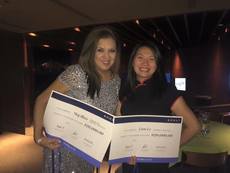
Lam Le MD, the medical director of St. John Outpatient wound center, has been able to build a charity wound care foundation in Vietnam thanks to her thriving MONAT business. Her foundation, Heal Foundation, was born when she found out about Harvard University’s vascular anomaly clinic at a medical conference that she attended. Dr. Le traveled with the Harvard group to Vietnam to care for patients and when she saw patients who could not pay for their own medical care, she was inspired to go back to provide wound care for indigent patients.
In the meantime, as a physician, she ignored most of the cosmetic advertisements that she came across on her Facebook feed. But when she noticed a friend’s new profile photo, she contacted her friend to ask about the product she was using on her noticeably more attractive hair. Dr. Le initially wanted to buy the product for herself. While she was looking for a good deal, she stumbled on the opportunity to become a market partner for the hair product. She had already been looking for a way to fund her dream clinic in Vietnam when the MONAT opportunity came up. So she tried the product herself and observed the results on a few friends and colleagues. Convinced that it worked to improve the appearance of hair and to regrow hair, she was quickly able to bring on 15 team members, who brought on more team members. Currently, Dr. Le is the leader of a 1500-person team, called the HEALthy Hair Dream Team.
Now her business, which initially started as a way to build some residual income for the wound care foundation, has been a very successful endeavor. And that has translated into growth for Heal Foundation. After her trip with Harvard University’s medical team, Dr. Le started helping fill the need in wound care by giving supplies to a hospital in Vietnam. Then, her foundation set up a wound care clinic. Now she is able to able to take a whole medical team, including orthopedic surgeons and a vascular surgeon to provide free wound care to indigent patients in Vietnam. Heal foundation takes a team of 20+ medical professionals on humanitarian missions to Vietnam twice a year. Dr. Le says, "We do continued medical education and training at our wound clinic while building a limb salvage program at Cho Ray hospital. We also pay off medical bills for cancer patients who are unable to afford treatment. On our last trip we paid off medical bills for over 100 patients." And, in order to help improve wound care for the long term, the foundation pays for wound care doctors from Vietnam to travel to the United States for training. The foundation will be opening a second free clinic in Vietnam and one in Tulsa, Oklahoma this year.
Dr. Le is passionate about everything she does, and that is what makes her seemingly diverse interests of hair care and wound care blend together so well. Clearly able to motivate people, Dr. Le speaks of as herself as a team member, even when she has the role of a leader. To find out more about Heal Foundation, see their website healfoundationusa.com.
Amanda is a PGY 2 radiology resident who has a clear mission to help physicians get out of debt. Her interest in finance is more than just a hobby. As a young girl in Taiwan, she says that her parents were in debt. When she saw debt collectors coming to her childhood home, she decided to take action by saving coins to help her parents financially. When her mother found the coins, she told Amanda that they could not afford to put money aside as they needed it for food. These early experiences really formed Amanda's need to have a strong grasp of financial issues and to avoid debt. And the business savvy that she had armed herself with is far from selfish, as she shares what she has learned from her good and bad experiences to help other physicians achieve financial freedom.
When Amanda had her daughter at age 22, she took time off from medical school to care for her child. As the primary financial support for her daughter, she worked as an MCAT tutor, first for a company, and then as her own boss, setting her own rates and hours. When she went back to medical school, she paid her tuition with no-interest credit cards, getting cash back instead of paying interest. Working 30-40 hours a week at work-study jobs during medical school, she relied on her parents to care for her daughter while she studied, worked, stayed late at the hospital for her clinical rotations and interviewed for residency. As a 4th year medical school, she was approached by a large publishing company to write a book on test preparation for USMLE step I. She decided to self-publish instead, and she had so far authored books on preparation for MCAT, USMLE, and a book on the residency Match.
Now a radiology resident, Amanda looks back and is immensely grateful that her parents were so supportive of her daughter. She says that, “by example, they taught me to be persistent, creative, and loving. I would not have been where I am today without their full-hearted support.” Amanda has taken her own financial know-how, which she says she learned out of necessity, to other doctors. She says that medical school education is missing a huge component, which is finance. She explains that the practice of medicine is a business, and that it is challenging to learn how to run that business while drowning under $300,000+ educational debt at 8% interest. She paid off her own educational costs as an intern and she strongly feels that doctors should help each other by sharing and broadcasting beneficial information. She runs drwisemoney.com, a financial website or doctors, which has a resources and financial tools for physicians. She gives talks and speaks at hospital/residency conferences, and she was even invited to speak at Radiological Society of North America.
One piece of advice that Amanda shares is to look at the price tag of your education before you begin. She says that she attended an expensive medical school and that looking back, she has learned that education is what you make of it and that a lower cost medical school is an important step in the right direction to minimizing educational costs for a physician. Amanda (Dr Wise Money) uses charts to easily explain financial concepts, such as how to deal with student loans. Here is article about student loan management written by Amanda. Bio:Amanda is a 2nd year radiology resident. As she has achieved her financial goals of paying off her student loans, purchasing a home, and maxing out retirement savings, she writes and gives speeches on personal finances for doctors in hopes of seeing her colleagues also enjoy financial success. Through her blog drwisemoney.com, Amanda shares ideas and experiences on how to achieve financial goals efficiently.
Stephanie Moore MD, a cardiologist at Massachusetts General Hospital and co-founder of Vega Vitality, a thriving lifestyle and wellness center right in the heart of Boston, says that her secret is that she doesn’t work hard- she works smart. In fact, she believes so strongly in working smart that she is going to be holding a Vega Mastermind course in the fall of 2016 to teach others how to build a wellness business.
Dr. Moore has clearly been a high achiever for some time. As the quality director in Cardiology at MGH, and a full time Cardiologist, she forged friendships and trust among her colleagues. Dr. Moore and Ashley Hilmes, a critical care nurse at MGH discovered a shared love of yoga, wellness, skin care and alternative therapies. They had extensive experience with illness on the patient-care side, had built a mutual trust through their years of working together, and they were ready to create an avenue for wellness to work on preventing disease, rather than treating it at a late stage.
Clearly a very social person, Dr. Moore had already built a successful Rodan and Fields franchise of her own, primarily as a way to enjoy fun social events with her wide circle of friends. Her lucrative Rodan and Fields business was profitable enough to pay for her and her business partner to start the high end Vega Vitality.
Dr. Moore explains that she has always been interested in business. She says that she has learned how to run a business by diving right into it. Stephanie Moore and Ashley Hilmes take care of different aspects of the business side of Vega Vitality, including the budget, meetings, networking, legal issue, medical malpractice insurance, subleasing to contractors, cross marketing with team members and billing. The most important aspect of running a business, according to Dr. Moore, is finding a partner you can trust. Already highly qualified as a cardiologist, she added to her skill set by taking courses in Functional Medicine, a branch of medicine that looks at body systems using lifestyle and diet to control disease. Currently, Vega Vitality offers a wide range of services that bridge the gap between spa services, beauty and health care, including aesthetic, fitness, and coaching and nutritional consultation. The team works well together and is adding features to their unique collection of amenities. Stephanie says, "Keep and eye out for the VEGA Mastermind Course, 'Own Your Wellness: How to be the owner of your own business and your health," coming to Boston this fall. To learn more about Vega Vitality, visit vegavitality.com or follow on Facebook, Instagram or twitter.
You can contact Stephanie at Stephanie@vegavitality.com 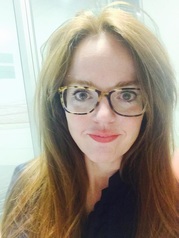
Mary Pinder-Schenck MD went from being a busy academic oncologist to developing clinical research infrastructure in sub-Saharan Africa. A clinical research director at Glaxo Smith Kline, she started as an oncologist specialized in lung cancer. For 6 years after her fellowship training, she was extremely busy with patient care and tried to squeeze in clinical research projects – with scarce support in terms of funding, clerical help and administrative staffing. A successful doctor and a mom of 2 young boys, she had a breakthrough moment when she couldn’t make it to a party at her son’s school- a party that was very important to him and that most other parents were able to get to. She realized that since she wasn’t doing as much research as she wanted to do and since she wasn’t available at home as much as she would have liked, that she wanted to make a change.
Recognizing that she held an esteemed and valued position, and having developed strong years-long relationships with many of her patients, she carefully and meticulously looked for a job at pharmaceutical companies that she had worked with, waiting to find something that was really right for her.
She did find the perfect fit. She found a job at Glaxo Smith Kline, working on funding research projects and helping emerging researchers in sub Saharan Africa build the capacity for clinical drug testing, with the plan of developing new drugs to treat chronic diseases endemic to the region. Her day-to-day work involves reading research proposals, meeting with investigators, training researchers and teaching the facilities how to ensure quality in clinical trials. She schedules Skype meetings to stay in contact and doesn’t travel often, but has a trip to Uganda coming up to visit a research site. She loves her new work culture, explaining that is ‘normal’ to work regular hours and that her colleagues, male and female, acknowledge that everyone need work-life balance.
Dr. Pinder-Schenck says that is was tough for her to leave her patients and describes some of her patients as being anxious about what would happen to their own health care once she was no longer their doctor. But after she had developed such a caring rapport with her patients over the years, they were sad to see her leave, but supportive of her new opportunity and the fact that her new job would give her more time to spend with her family.
Dr. Pinder-Schenck says that the medical students and residents are not aware of the multitude of jobs available in the pharmaceutical industry. She explains that there are jobs for all specialties, including primary care and anesthesia, not just specialties that use complex medications in patient care, like oncology. There are even positions for doctors who do not consider themselves ‘research people.’ Jobs are listed on the career page of pharmaceutical company websites and recruiters are always looking for doctors to fill a variety of roles. In fact, Dr. Pinder-Schenck advises that once you start applying to jobs or contacting recruiters, you should be ready for many interviews, so she suggests waiting to make that initial contact until you are really ready to make the move. 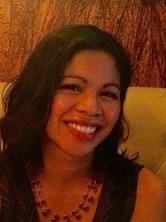
Maryam Beltran Shapland MD went from working as a busy emergency medicine physician to a medical director for Securain Financial Group. While it is not an intuitive leap, the fast paced work and the wide variety of challenging cases in her current job as a medical director and at her former job as an ER physician make the settings surprisingly similar. Hard working and ambitious in every job she has had, she doesn’t shy away from diving into complex new situations.
Dr. Beltran Shapland enjoyed her work in emergency medicine, was involved in administration and often worked more hours than she was contracted to work because of last minute doctor shortages and scheduling changes. She was the most productive doctor in her group, pulling in high numbers of RVU’s and bonuses. But, while she was able to handle the intensity of medically unstable patients and what she describes as the occasionally threatening environment that was an inherent part of her ER work, Dr. Beltran Shapland found that balancing the irregular shift hours was unsustainable for the long term. With two young children, she went part time to 0.8 and then to 0.6. While she spent enough ‘hours’ with her family, she was exhausted and often preoccupied with thoughts of patient results, even while she was away from work. She also was interested in other aspects of medicine, and she was already involved in disaster relief when she took an online global health course to get her post graduate global health certificate.
She considered ways to incorporate global health into her work and had fleeting thoughts of looking for a non-clinical position as a more workable long-term prospect. Then her own outlook abruptly changed when she was named in a lawsuit. A patient who developed a medical condition sued everyone who had been involved in her care, including Dr. Maryam Shapland, who had seen her a week earlier in the ER. Like many physicians faced with a lawsuit, she was devastated and heartbroken. The lawsuit was a pivotal moment in which she felt such a sense of betrayal after having worked so hard to save the life of a dying patient. It was the tipping point that started her seriously looking at non-clinical positions.
She scoured websites, read books, and looked at job sites. When a recruiter looking for a mid-career physician with clinical experience to work contacted her, she was intrigued. After confirming that the job offer was something she wanted to know more about, she applied. Now she works as a medical director for Securain Financial Group, a life insurance and disability company. Her daily work involves teaching underwriters about medical conditions and guiding them through the complexities of claims. She often looks at autopsy reports and police reports while giving her opinions on claims and a variety of cases. She says that every case is different and that her work is never boring. She says that the job she does requires 5-10 years of clinical experience and maintenance of board certification as well as an active medical license.
Dr. Beltran Shapland stays in touch with former colleagues (who often ask about how she got her position) and is very happy with her current job. She enjoys her day-to-day work and can see longevity in it, where she couldn’t see that in her work as an ER physician. 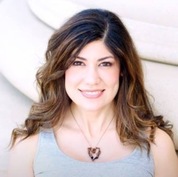
Kricia Palmer MD is a talented and ambitious woman who has already managed to achieve not just one dream career, but two dream careers. A doctor and an interior designer, she has followed her ambitions and creative passions, often through unexpected paths along the way.
Kricia was a good student from a young age, and she was also artistic and creative. She began college as a dance performance major, but soon decided that a professional dance career would probably be short lived. Recalling encouragement from her high school biology teacher who told her that she was smart enough to be a doctor, Kricia decided that she wanted to take on the challenge of a career in medicine. She switched paths from dance to science during college and was accepted into Medical School. As a medical student, she did well academically and met her husband, a medical school classmate who is now an ER doctor. After her own prestigious Pediatric Allergy and Immunology fellowship at Duke University, she returned to Arkansas to practice at Arkansas Children’s Hospital.
A few years later, after having two boys, she wrestled with wanting to spend more time with her family, guilt about wanting to leave medicine and a strong pull towards interior design. Kricia says that she felt as early as residency that she was not happy working as a physician. But, while she knew she was not happy, she kept waiting for it to get better and struggled with the idea that she did not want anyone to know she was considering leaving medicine. Looking back, Kricia thinks that medicine was just career mismatch for her because she craves creativity in her work.
Around the same time she was having her doubts about medicine, Kricia began to discover that interior design was a real career option. She researched the field of interior design, and shortly afterwards she left medicine to spend more time with her children. She began working towards a degree in interior design and she also started a small design business while getting her degree. Kricia explains that it has been a slow process because she loves spending time with her two young boys. Her plan is to intentionally grow her business in the coming years. Overall, Dr. Palmer values her medical background for many reasons. In a practical sense, her son has mild cerebral palsy and allergies. She considers her experience as a pediatrician a blessing because it makes the process of managing the health and healthcare of her son easier. She also cherishes the privilege that she had in being a part of patients’ lives and says that her one-on-one work with patients touched her own life. And even in her work as a designer, Kricia says that it is easier for her to talk to people in awkward or uncomfortable situations because of her medical experience. She believes that she would not have been able to interact with people as well as she does without having had her experiences as a physician. Now Kricia Palmer is an interior designer in Little Rock, Arkansas and she describes herself as ‘Fulfilled.’ She says that the response she gets when she tells people about her career transition is great and, surprisingly, much better than she expected during those years when she was conflicted about her career. Kricia's interior design business is Palmer Home Designs. 
Jeanine Renne MD is confident. She is confident that she was a good doctor when she was a neurologist. She is confident that she did a good job at preventing nuisance medical malpractice lawsuits when she worked as a medical legal adviser. And she is confident enough to manage all of the ins and outs of the European band tours that she manages when she brings bands on tour to the US.
Her career journey was not what she had expected. When she asked if she could extend her neurology residency by cutting back on her work hours so that she could spend time with her son who was born during her second year of training, her program director refused. So she made the decision to stay home with the baby and took some locums work for a while.
Then, when she and her family moved for her husband’s tenure position as a Chemistry professor, her father-in-law, an Oncologist, suggested that she try medical-legal work. She decided to give it a shot and found a great job as a medical legal adviser for plaintiff attorneys. She said that most of her work consisted of advising the attorneys against lengthy court battles over bad outcomes that were not caused by anyone doing anything wrong. But, she says, there were also cases in which poor continuity of care resulted in avoidable bad outcomes. Dr. Renne enjoyed her work and only stopped because the lawyer she was working for, whom she describes as a very reputable attorney, was retiring.
Before she had the time to look for another job, she happened to be on Facebook when she looked up the profile of friend she had made during her college year abroad. A violinist in training as a teen, he was an extremely talented, professional musician who was not particularly money wise, and who was actually homeless. Dr. Renne went back to her neurology ‘problem solving’ mindset and learned how to book a musical band on a United States tour- from scratch.
This started a new journey for Jeanine Renne. She learned how to be a music manager by reading articles online. She found other niche European bands and brought them on tour to the US- managing everything from licensing to booking tours to contract negotiations to US work permit and visa applications. She says that she even works with emerging artists and musicians who play medieval music and she locates the right audience for different musical styles.
She has now incorporated her own business as a booking agent. But what she really provides is a practical partnership for the musical artists that she represents. She says they are more devoted to working on developing their art than with the business aspects, as exemplified by the homeless professional violinist. She builds her clients’ businesses through her own understanding of the music industry and through networking with promoters and club owners. Dr. Renne describes her journey into music management as indirect, but she has no regrets about her medical career. She says that it set the stage for studying to solve problems, for learning how to apply and translate knowledge into a real life context and for the practical skill of getting things done. As a physician she learned resource management and time management skills that she still uses now. Jeanine was happy to share a clip of one of the artists who she represents here. |
Physician Success Stories
|
Information
|
Stay Connected
|
